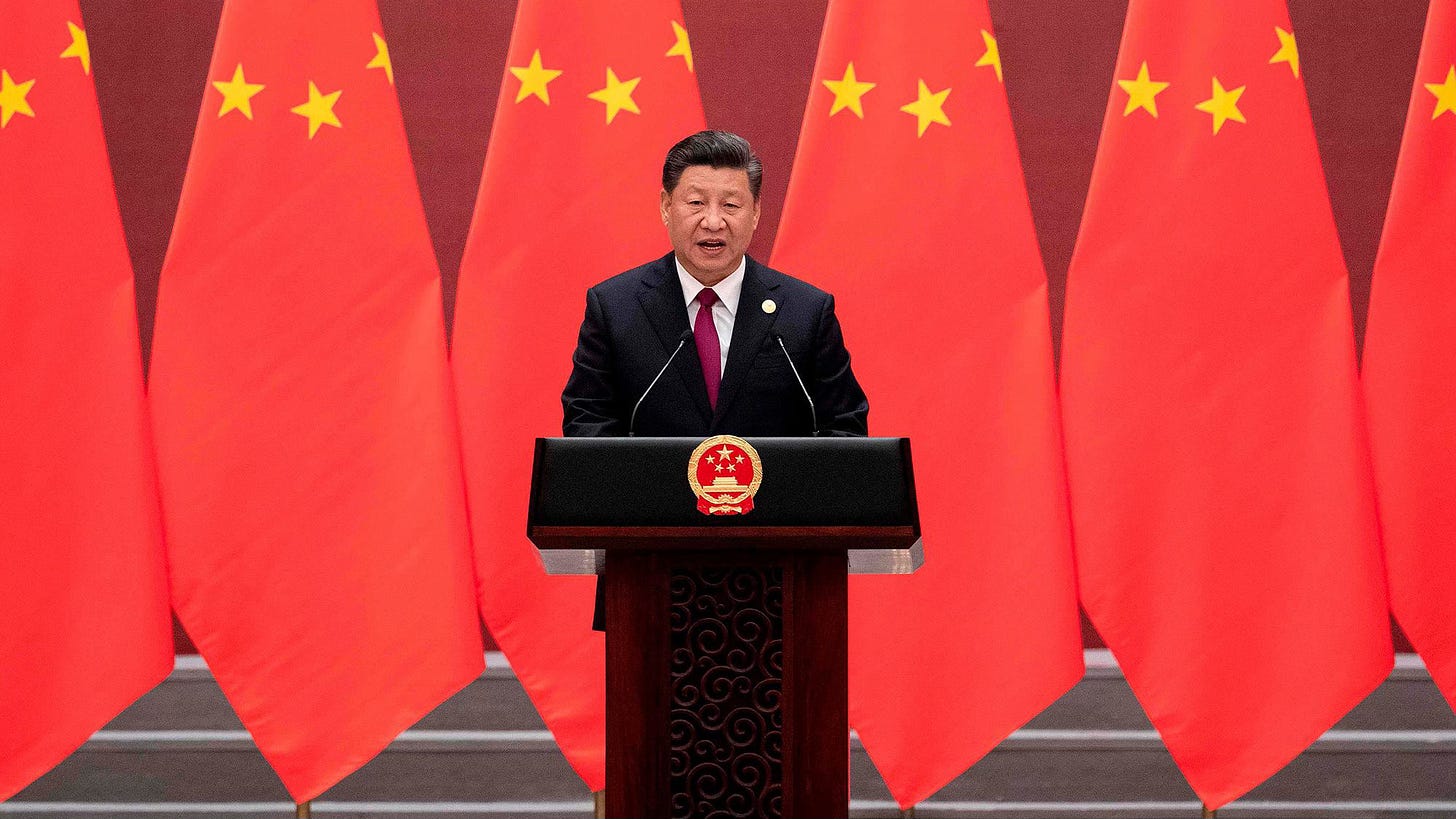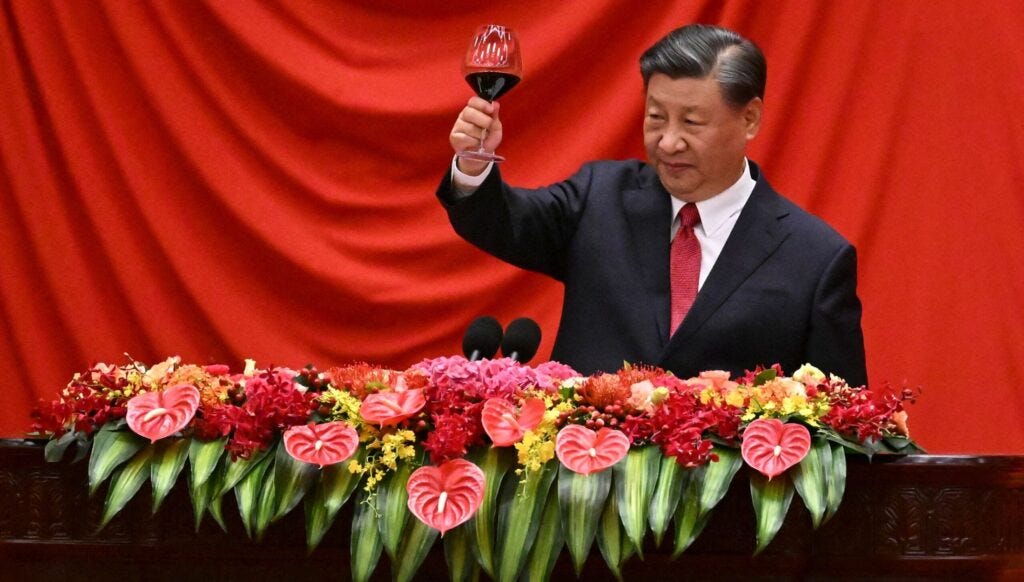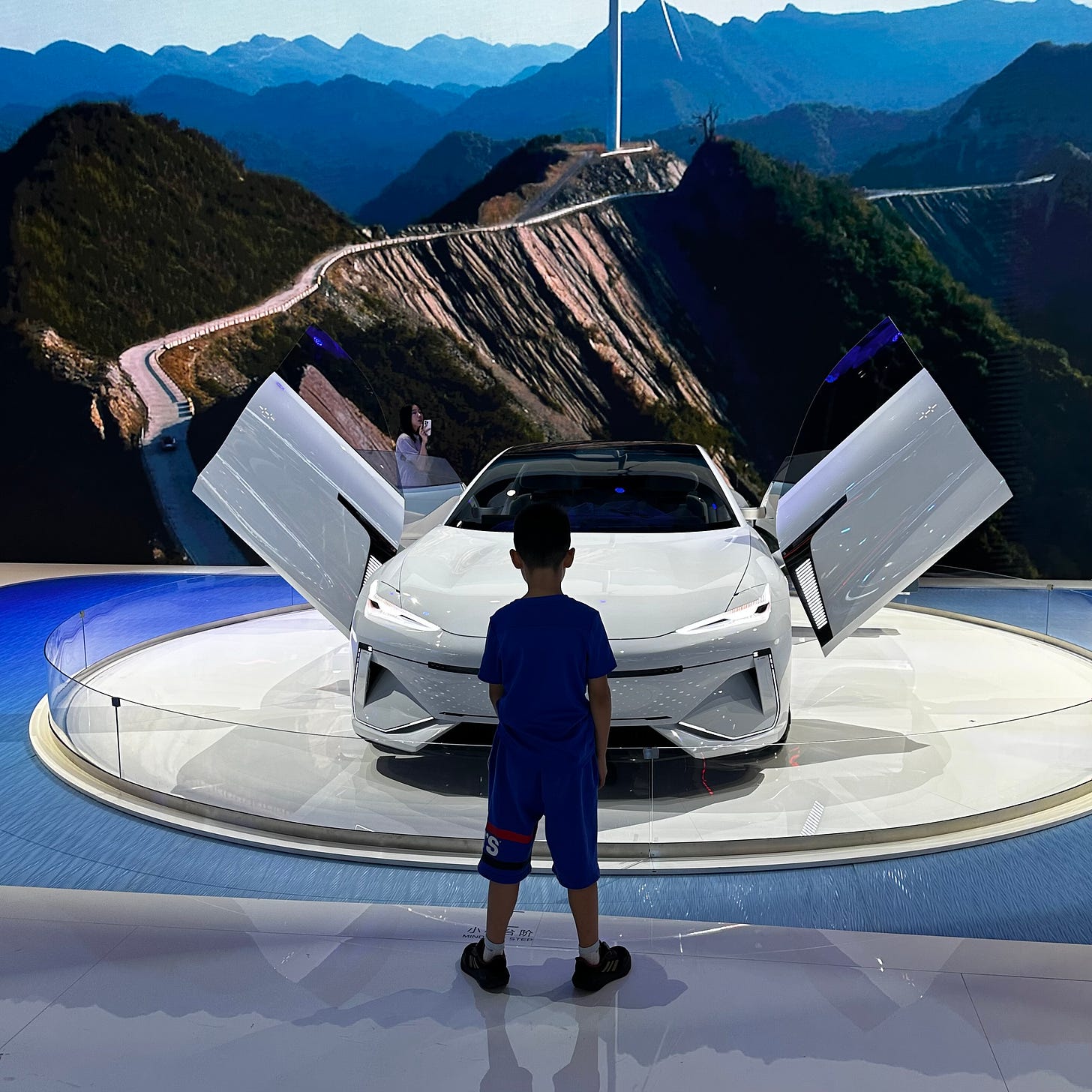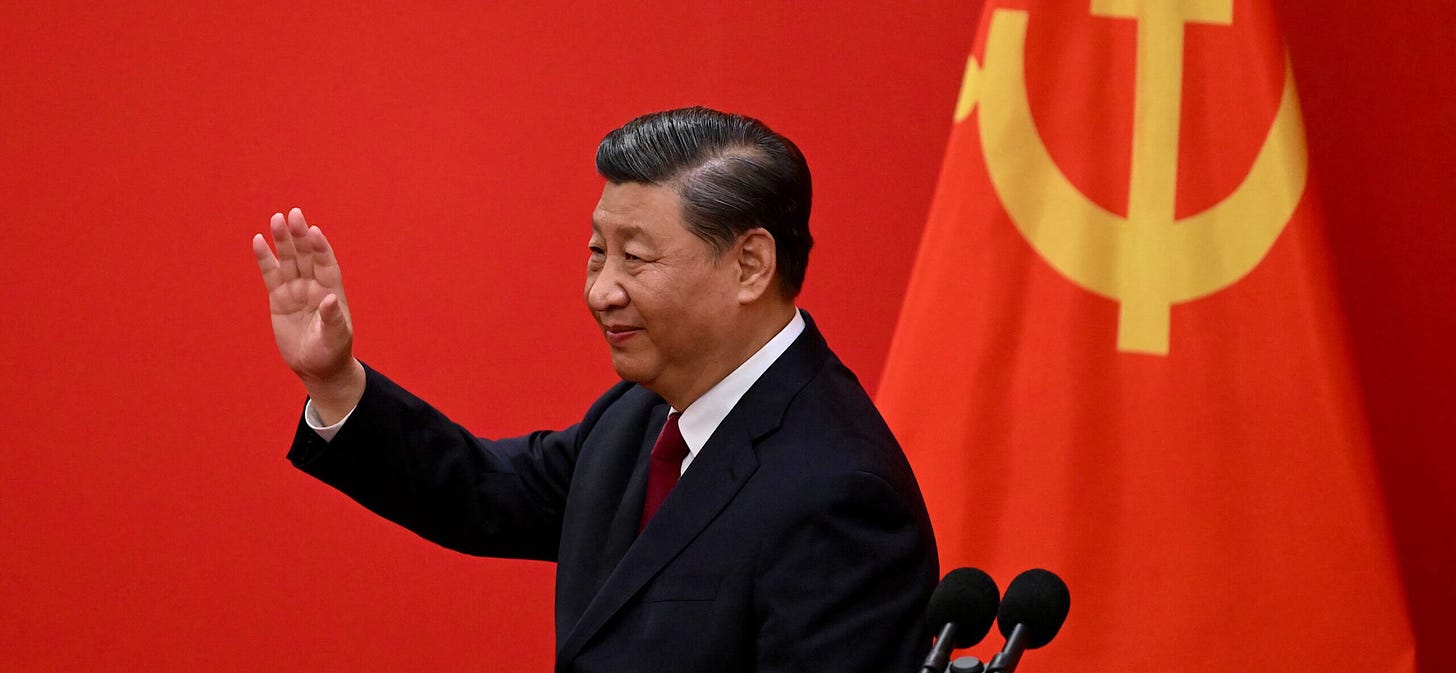Rational Decisions
China economy suffers structural problems, China’s installed renewable power reaches record high, electric vehicle (EV) production is in East Asia, IMF upgrades China economic growth 2023-24.
UPDATE: Open a Western business newspaper and one would probably come away thinking that the Chinese economy is doing poorly, or perhaps even on the verge of collapse. While it is true that the country’s economy continues to suffer from structural problems, this perception is not just wrong but risks undermining the credibility of Anglophone publications and the capacity for our policymakers to make rational decisions.
Installed capacity of China’s renewable power reached a record high in October at 1.4 billion kilowatts, up nearly 21 percent year-on-year and constituting nearly half of the country’s total, indicating the country’s accelerated transition to a greener energy structure, experts said.
Electric vehicle (EV) and battery production facilities concentrated in South Korea, China, and Japan are spreading to the United States and Europe in earnest. These trends coincide with the COP26 adoption of a declaration to stop selling internal combustion engine vehicles in Europe and North America by 2035 and the rest of the world by 2040.
China's economy is set to grow 5.4% this year, having made a "strong" post-COVID recovery, the International Monetary Fund said on Tuesday, making an upward revision to its earlier forecast of 5% growth, while expecting slower growth next year.
China leads renewable power capacity
By China Daily
BEIJING – Installed capacity of China’s renewable power reached a record high in October at 1.4 billion kilowatts, up nearly 21 percent year-on-year and constituting nearly half of the country’s total, indicating the country’s accelerated transition to a greener energy structure, experts said.
Meanwhile, energy companies are entering a phase of accelerated competition where technology-driven firms that intensify research investments to enhance product performance and production efficiency will ride the tide, they said.
Data from the National Energy Administration showed on Thursday that hydropower installations had a combined capacity of 420 million kW (conventional hydropower at 370 million kW and pumped storage hydropower at 50.04 million kW), wind power was at 404 million kW, photovoltaic (PV) stood at 536 million kW and biomass power was at 44 million kW.
By the year-end, the total capacity of renewable energy installations in China is expected to exceed 1.45 billion kW, with wind and PV capacities surpassing 1 billion kW collectively, the NEA said.
Zou Ji, CEO of non-profit organization Energy Foundation and president of EF China, said that the country leads the global production capacity and market share in multiple areas of new energy, such as PV, offshore wind energy, batteries, electric vehicles and ultra-high-voltage direct current transmission.
“China is responsible for more than 75 percent of the global PV supply chain, and its export volume of such products has increased significantly in accordance with global growth,” said Jiang Yali, a solar analyst at energy research provider BloombergNEF.
Driven by China’s decarbonization goals and buoyed by increasing market demand, China has a complete life-cycle supply chain in PV facility manufacturing, enjoying an obvious scale effect. Meanwhile, the technology of PV power generation is developing rapidly, which greatly promotes cost reductions, giving the country a leading role in the global PV supply chain, Jiang said.
Zou said China’s most new energy related technical capabilities have reached an internationally competitive level with relatively low costs. He said that companies have continuously increased investments for technological advancement and market expansion.
Zou pointed out that China’s rapid development in the new energy industry is supported by a robust manufacturing sector. However, currently, industries such as power batteries and other low-carbon-related equipment manufacturing sectors are experiencing short-term overcapacity issues.
To stay competitive, experts suggested enterprises should intensify research investments, focusing on product quality improvement and efficiency.
“While the new energy industry is poised for continued high growth in 2023, it faces a series of challenges. Prices in the photovoltaic and energy storage industry chains are consistently decreasing, indicating periods of temporary overcapacity,” said Zhu Gongshan, chairman of Golden Concord Holdings Ltd, a major PV company.
“However, overcapacity is a natural phase in market economies. Facing competition while being prepared for potential elimination is an integral aspect of industry evolution,” Zhu said.
He further said that as the renewable energy industry gears up for a shakeout, those hinged on specialised products and high-quality development driven by technological innovation will stand out, adding that enterprises should intensify research efforts.
Read more here.
West is wrong about China’s economy
By Philip Pilkington
Rumours of an impending collapse are greatly exaggerated
Open a Western business newspaper and one would probably come away thinking that the Chinese economy is doing poorly, or perhaps even on the verge of collapse. While it is true that the country’s economy continues to suffer from structural problems, this perception is not just wrong but risks undermining the credibility of Anglophone publications and the capacity for our policymakers to make rational decisions.
Last week Chinese price data showed mild deflation, a data point out of which the Western financial press made hay. “China’s deflation worsens as economic pressures mount”, read the Financial Times headline. Bloomberg ran with “China’s consumer price drop worsens, fuelling deflation fears”. The mild deflation that is taking place in China does indeed stem from structural problems in the economy — especially the fact that it is overly reliant on investment spending and insufficiently reliant on consumer spending. But, at a certain point, the negative press becomes outright misleading.
Two other data points were released last week which show the Chinese economy growing robustly. The first came from the private sector Caixin Services Purchasing Managers Index survey, which showed stronger than expected growth in the very sector about which bearish commentators have raised concerns.
Interestingly, the private sector surveys of the Chinese services sector show it expanding quicker than the official Chinese government studies which showed a mild contraction in November. Those who accuse the Chinese of inventing economic statistics would do well to explain why government surveys are more conservative than their private sector equivalents. Whatever way one looks at it, the Chinese services sector is now expanding.
Then there is Chinese export data, which showed exports expanding for the first time in seven months. Combined with the service sector data, this shows a broad-based expansion of the Chinese economy. Not a veritable economic boom, it must be stressed, but continuous growth that is consistent with the IMF’s own projections. These show that Beijing will comfortably meet its 5% growth target this year — a projection China bears seem to ignore when they pass judgement on the economy.
There are rumours that China may have advanced in its capacity to produce semiconductors. A specialist hardware website notes how a recent Huawei laptop listing suggests that the Chinese have broken the 5 nanometer chip barrier. If the listing is correct, it suggests that China has advanced even further than the 7 nanometer processor found in the new Huawei Mate 60 smartphone. The phone shocked Western analysts who thought that such technology was beyond the production capacity of the Chinese. It increasingly looks like the American-led chip sanctions are just pressuring China to produce the needed technology domestically, and thereby undermining the competitiveness of incumbent Western players.
The Chinese economy will not grow at the runaway rates it did in the 2000s and 2010s. No one expects this now that the average Chinese person has become wealthier. Indeed, the Chinese government’s own growth targets reflect this new reality. But at a certain point, the obsessive bearishness about China is discrediting. Last year at a conference, Fang Xinghai, vice-chair of the China Securities Regulatory Commission, stated: “I would advise international investors to find out what’s really going on in China and what’s the real intention of our government by themselves. Don’t read too much of the international media.” In response to this, UBS Chairman Colm Kelleher said that he and his colleagues were not reading Western media on the issue.
How long can the financial papers continue to push their bearish China narrative without discrediting themselves? More importantly, who exactly do they think they are helping? Policymakers benefit from being well-informed, and businesspeople who actually engage with China will quickly turn to other news sources, as Kelleher alluded to last year. Critical stories on China may make Westerners who have recently soured on the country feel good. Yet they are nothing but a soporific, and the effects cannot last forever.
Read more here.
U.S.-China Electric Vehicle Battery Competition and the Role of South Korea
By Kim Younkyoo
Electric vehicle (EV) and battery production facilities concentrated in South Korea, China, and Japan are spreading to the United States and Europe in earnest. These trends coincide with a noticeable global rise in these products’ importance. In November 2021 the Conference of the Parties to the UN Framework Convention on Climate Change (COP26) adopted a declaration to stop selling internal combustion engine vehicles in Europe and North America by 2035 and the rest of the world by 2040. EVs are supposed to overtake internal combustion vehicles in market share in 2030.
South Korea, China, and Japan currently dominate the global battery market. Four battery cell manufacturers in China, three in South Korea, and three in Japan account for 90% of the world market. When it comes to battery technology and production capacity, the United States and European Union are far behind. Tesla in the United States and EV companies in Europe focus only on battery pack assembly, which is the final stage of the battery supply chain, while raw material mining, processing, and materialization for batteries and battery cell manufacturing occur mainly in South Korea, China, and Japan.
The United States and Europe are pursuing a strategy to expand cell manufacturing by prioritizing cooperation with battery makers in South Korea. Cell manufacturing can scale up relatively quickly, but the biggest obstacle to restructuring the supply chain is securing raw materials. Therefore, they are globalizing this competition—for example, by building battery-producing factories in Africa. This competition has been folded into the larger economic-technological rivalry between China and the United States.
The EV provisions in the U.S. government’s Inflation Reduction Act (IRA) went into effect in April and represent a legislative effort to achieve many domestic and foreign policy objectives. Chief among them is establishing U.S. primacy in the contest with China over batteries and EVs. The United States judges that China’s dominance of the battery supply chain and technology are challenges that have already become a serious threat to the U.S. economy and national security. A key purpose of the IRA is to accelerate the expansion of the U.S. EV industry and to shift the battery supply network that is dependent on China to the United States and its allies.
Since the Sino-U.S. rivalry is global in character, Washington is searching for allies and is prepared to subsidize states that might support U.S. efforts to counter China. Alexander Vuving observes, for example, that what drove U.S.-Vietnam rapprochement and convinced Vietnam to “leapfrog” to a full strategic partnership with the United States was the U.S. offer to turn the country into a major high-tech and semiconductor hub in a friend-shored supply chain by providing assistance for acquiring the necessary technology, market access, and capital.
South Korea’s EV and battery industry is another key economic component of Washington’s plan to expand the EV industry and establish a battery supply network in the United States. South Korea, however, is itself highly dependent on China for the manufacture of critical minerals and battery components.
The implementation of detailed IRA guidelines is an important milestone in assessing South Korea’s role in the Sino-U.S. competition for supremacy in EVs and batteries. The global battery industry is still in its infancy. The period from 2023 to 2025 is an important phase in de-Sinicizing the supply chain while accepting some degree of dependence on China for key minerals and parts. By 2030, around 40 battery factories will be newly built in the United States. By 2025, 13 priority facilities will already be built. Three South Korean battery companies are participating in 11 of these facilities. Whether South Korean companies can continue to take 70% of the new battery manufacturing capacity in the United States by 2030 will depend on how well they can adapt to the establishment of a non-Chinese supply chain that will be fully deployed after 2026, when the requirements for non-Chinese critical minerals and components in the supply chain will be stringently applied.
Thus, the IRA is already demonstrating the linkages between domestic economic-technological policy, ecological imperatives, and national security across continents and is a prime manifestation of the U.S.-China rivalry. Clearly this rivalry has already engendered critical moves by South Korean companies, given their dependence on Chinese supply chains. So this interlinking of domestic and foreign economic imperatives could be a harbinger of intensifying international rivalries in the fast-approaching future.
In the current environment, the governments of South Korea and the United States should strengthen cooperation through the following measures:
Work to cultivate human talent in processing, smelting, and recycling critical minerals.
Pursue joint mining technology development that is compliant with environmental, social, and governance standards.
Implement joint projects to source critical minerals such as lithium, nickel, cobalt, rare earth elements, and graphite through U.S.-led multilateral platforms.
These actions will bolster U.S. and South Korean leadership in EV battery supply chains.
Read more here.
NB: Younkyoo Kim is Dean of the School of International Studies and the Graduate School of International Studies and Director of the Institute for Energy and the Environment at Hanyang University in Seoul.
IMF upgrades China's 2023-24 GDP
By Joe Cash
China's economy is set to grow 5.4% this year, having made a "strong" post-COVID recovery, the International Monetary Fund said on Tuesday, making an upward revision to its earlier forecast of 5% growth, while expecting slower growth next year.
The IMF said continued weakness in the property sector and subdued external demand could restrict gross domestic product growth to 4.6% in 2024, which was still better than the 4.2% forecast contained in its World Economic Outlook (WEO), published in October.
The upward revision followed a decision by China to approve a 1 trillion yuan ($137 billion) sovereign bond issue and allow local governments to frontload part of their 2024 bond quotas, in a move to support the economy.
"We have revised up growth by 0.4 percentage points in both years relative to our October WEO projections, reflecting stronger than expected growth in the third quarter and the new policy support that was recently announced," IMF's First Deputy Managing Director Gita Gopinath said in Beijing.
Over the medium term, growth is projected to gradually slow to about 3.5% by 2028 amid headwinds from weak productivity and population aging, Gopinath told a news conference to mark the release of the fund's "Article IV" review of China's economic policies.
China has introduced numerous measures to support the property market, but more is needed to secure a quicker recovery and lower economic costs to bring it down to a more sustainable size, she said.
"For the real estate sector, such a policy package will require accelerating the exit of non-viable property developers, removing impediments to housing price adjustment, and increasing central government funding for housing completion, among other measures," Gopinath said.
The combination of the downturn in the property sector and local government debt crunch could wipe out much of China's long-term growth potential, economists say.
Local debt has reached 92 trillion yuan ($12.6 trillion), or 76% of China's economic output in 2022, up from 62.2% in 2019. China's Politburo, a top decision-making body of the ruling Communist Party, said in late July it would announce measures to reduce local government debt risks.
"The central government should implement coordinated fiscal framework reforms and balance-sheet restructuring to address local government debt strains, including closing local government fiscal gaps and controlling the flow of debt," said Gopinath.
China should also develop a comprehensive restructuring strategy to reduce the debt level of local government financing vehicles (LGFVs), she added.
LGFVs were set up by local governments to fund infrastructure investment but now represent a major risk to China's slowing economy, with their combined debt ballooning to roughly $9 trillion.
"Improvements to local governments fiscal transparency and risk monitoring are necessary to prevent new vulnerabilities emerging, Gopinath warned, noting "financial stability risks are elevated and still rising."
Read more here.







